Virtual Instruments can replicate traditional instruments that you can creatively use in any style track.
They offer unique and innovative sounds and provide a level of flexibility and creativity that was unimaginable in the era of analog-only studios.
As a music producer, it’s important to know all about virtual instruments in order to take advantage of their full potential.
Plus, they’ll help expand your skills and elevate your tracks to the top of the charts.
In today’s article, we’ll break down:
- What virtual instruments are and their importance ✓
- Different types of virtual instruments ✓
- Role and use of sample libraries and samplers ✓
- Key features and functionalities of virtual instruments ✓
- Overview of virtual instrument software platforms ✓
- Techniques for effectively playing virtual instruments ✓
- Advanced tips for fine-tuning and sound design ✓
- Integration of physical hardware with virtual instruments ✓
- Creating unique sounds & using presets creatively ✓
- Making music that will truly stand out with virtual instruments ✓
- Layering and mixing different sounds for depth ✓
- Much more about virtual instruments ✓
By the end of this article, you’ll have a thorough understanding of virtual instruments and be well on your way to mastering their magic and power.
Whether you’re aiming to create lush orchestral arrangements, complex electronic beats, hard-hitting trap anthem, or anything in between, virtual instruments are key.
So, let’s dive in…
Table of Contents
- What Are Virtual Instruments?
- Types of Virtual Instruments: Breaking it Down
- Diving Deeper: Key Features of Virtual Instruments
- Popular Virtual Instruments Platforms: VST, AU & AAX
- The Art of Playing Virtual Instruments
- Integrating Physical Hardware with Virtual Instruments
- Using Loops and Phrases to Enhance Your Music
- Beyond the Basics: Sound Design with Virtual Instruments
- Virtual Instruments: Final Thoughts
What Are Virtual Instruments?
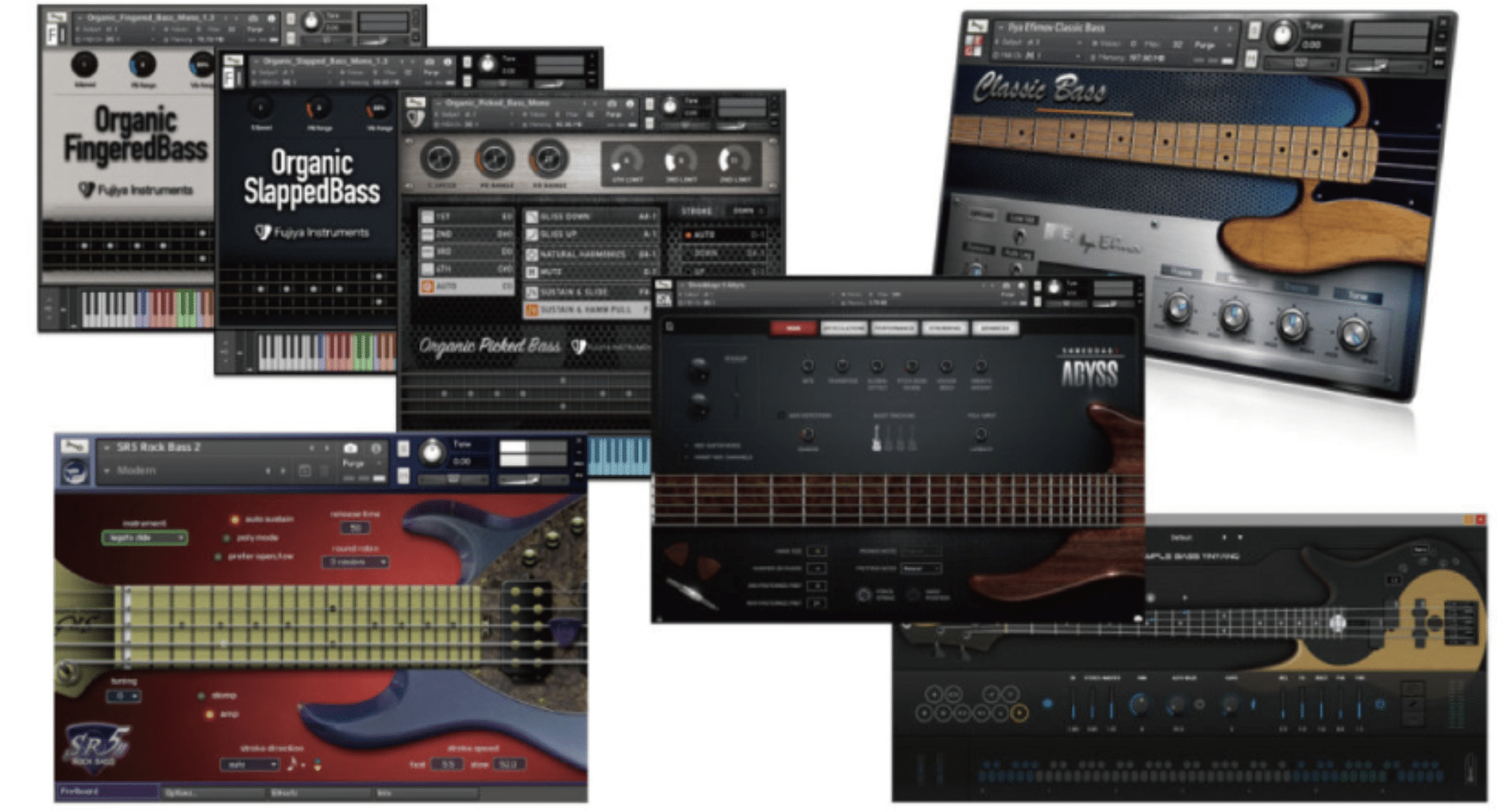
Virtual instruments (free/premium) have revolutionized the way we create music.
In general, a virtual instrument is a software-based tool that emulates the sounds of traditional instruments.
Whether it’s replicating a grand piano, a vintage synth, or an entire string section, these plug ins offer the versatility and convenience that modern music production demands.
The beauty of virtual instruments lies in their accessibility and functionality.
You can access an extensive collection of sounds and instruments that were previously unreachable for many.
From warm piano tones and guitar riffs to complex orchestral textures, virtual instruments bring a world of sonic possibilities to your fingertips.
Another significant aspect is how easily virtual instruments integrate with digital audio workstations (DAWs) like Pro Tools.
This seamless integration allows for intuitive:
- Control
- Editing
- Manipulation of the sounds
It helps you to create unique tracks that capture peoples’ attention.
The transition from hardware to software-based instruments has truly opened new avenues for creativity.
Types of Virtual Instruments: Breaking it Down
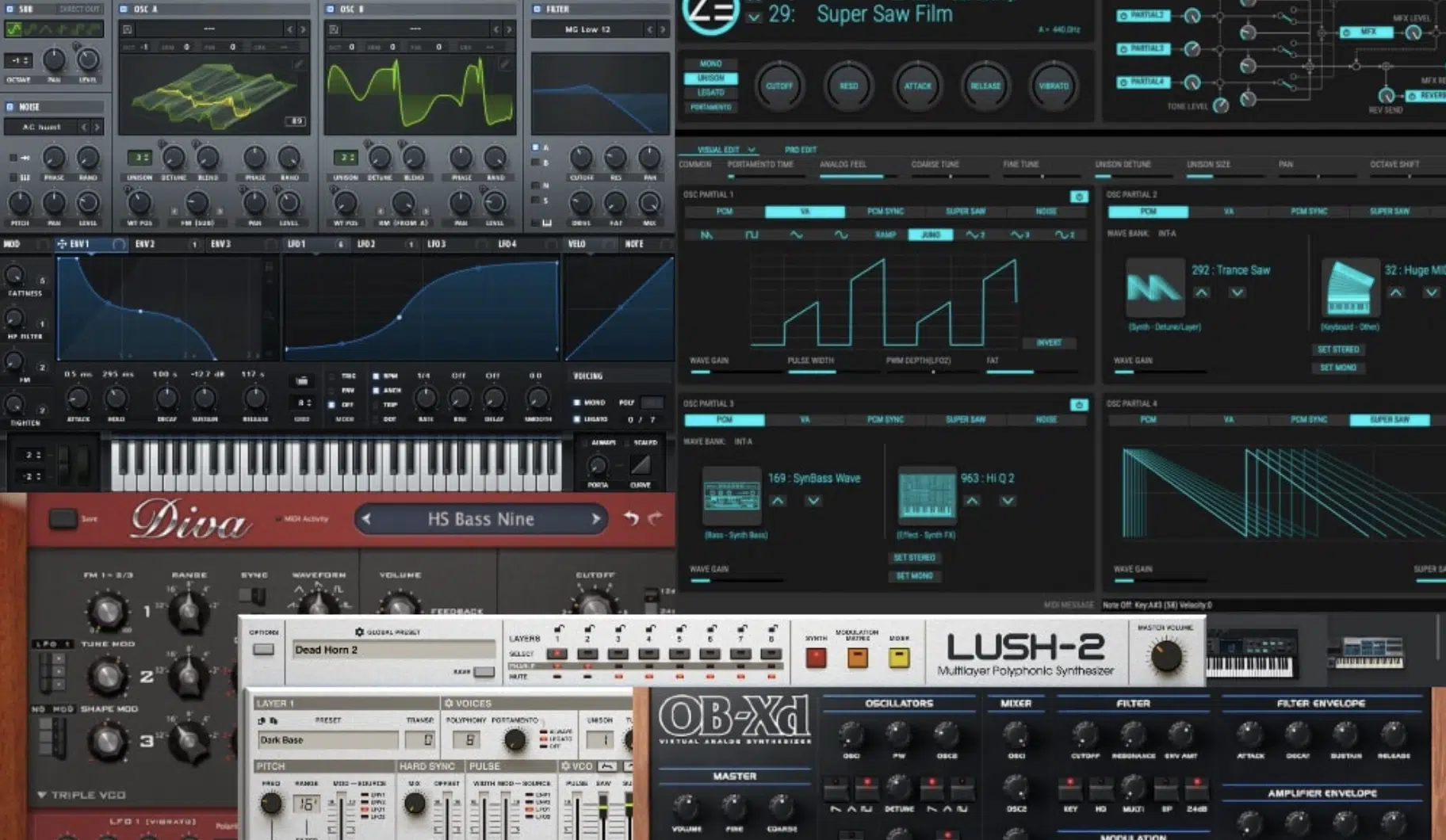
Virtual instruments come in various forms (from free to premium), each offering unique sounds and functionalities.
Among the most popular are virtual pianos, which provide the renowned sound of acoustic pianos without the need for a physical instrument.
Similarly, virtual synths offer an array of sounds straight from your computer, like:
- Classic analog synth tones
- Cutting-edge digital creations
For those looking for more organic sounds, virtual string, brass, and woodwind instruments offer a realistic alternative to recording live orchestras.
These instruments are meticulously sampled from real performances 一 providing a depth and realism that can elevate any composition.
Bass and drum virtual instruments are also fundamental, offering a range of bass sounds/drum sounds from different genres and styles.
And of course, there are great familiar guitar emulations as well.
Beyond traditional instrument sounds, there are more specialized virtual instruments that cater to any unique sound and are keys to unique music.
From ethnic instruments/samples that bring familiar world music into the mix to experimental soundscapes created through advanced synthesis techniques, the range is mind-blowing.
Diving Deeper: Key Features of Virtual Instruments
Virtual instruments are powerful tools equipped with features that enhance your musical creativity. So, let’s break down some of these key features that make virtual instruments indispensable.
-
Exploring Oscillators, Sample Players & Built-in Effects
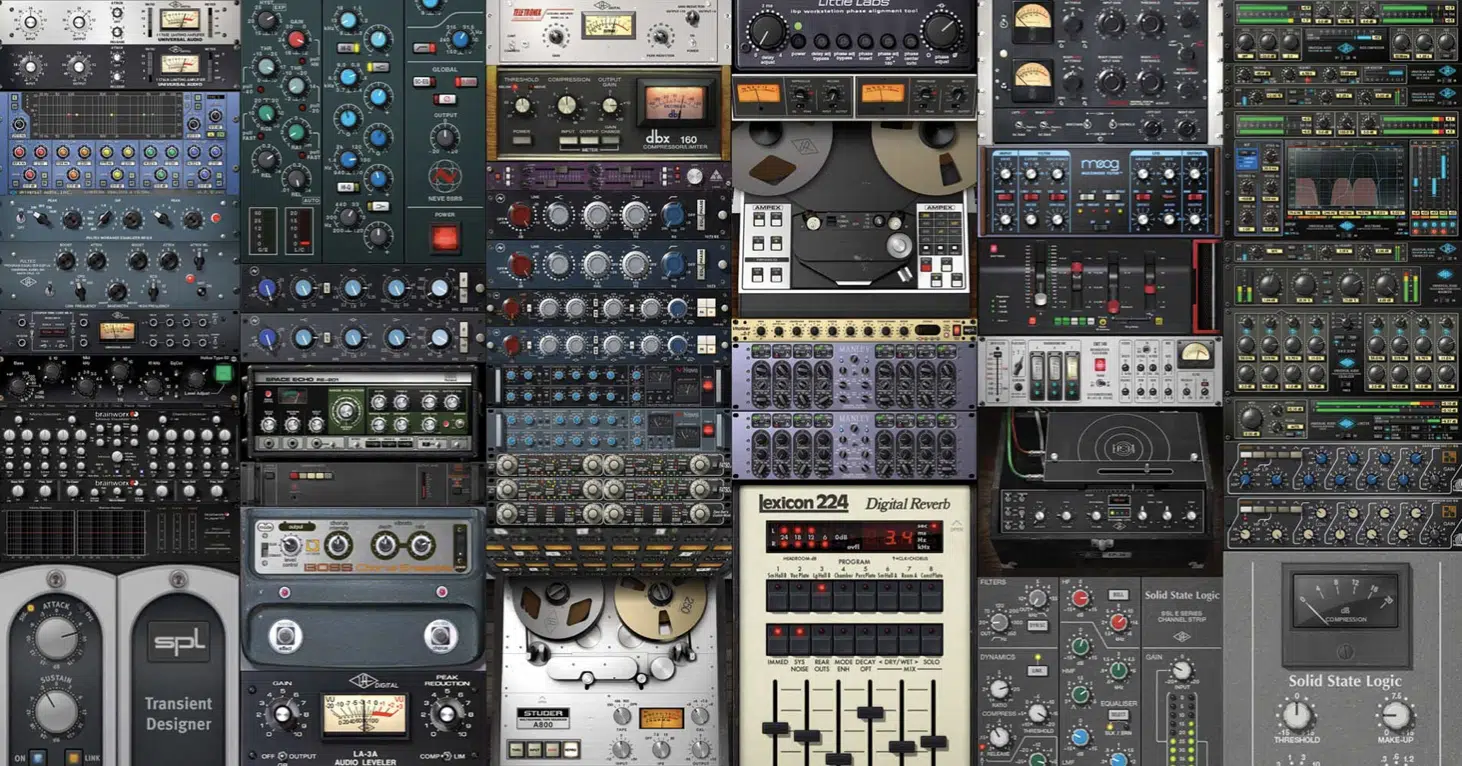
At the heart of many virtual instruments are oscillators and sample players.
Oscillators generate sound waves, offering a variety of wave forms to create diverse tones, from smooth sine waves to rich square waves.
A sample player, in contrast, plays back recorded sounds. Meaning, a sample player can emulate anything from a single note to complex soundscapes.
Built-in effects are another crucial (and super fun) aspect.
These audio effects, ranging from reverb and delay to distortion and modulation, allow you to shape and enhance the sound of your virtual instruments.
For instance, adding a bit of reverb to a virtual piano can give it a more spacious and realistic sound 一 mimicking the acoustics of a concert hall.
The combination of these features will help you replicate real-world sounds and explore uncharted sonic territories.
Whether it’s creating rich, warm sound scapes with virtual synths or producing intricate rhythms with samplers, the possibilities (and control) are virtually limitless.
-
The Power of Presets in Virtual Instruments
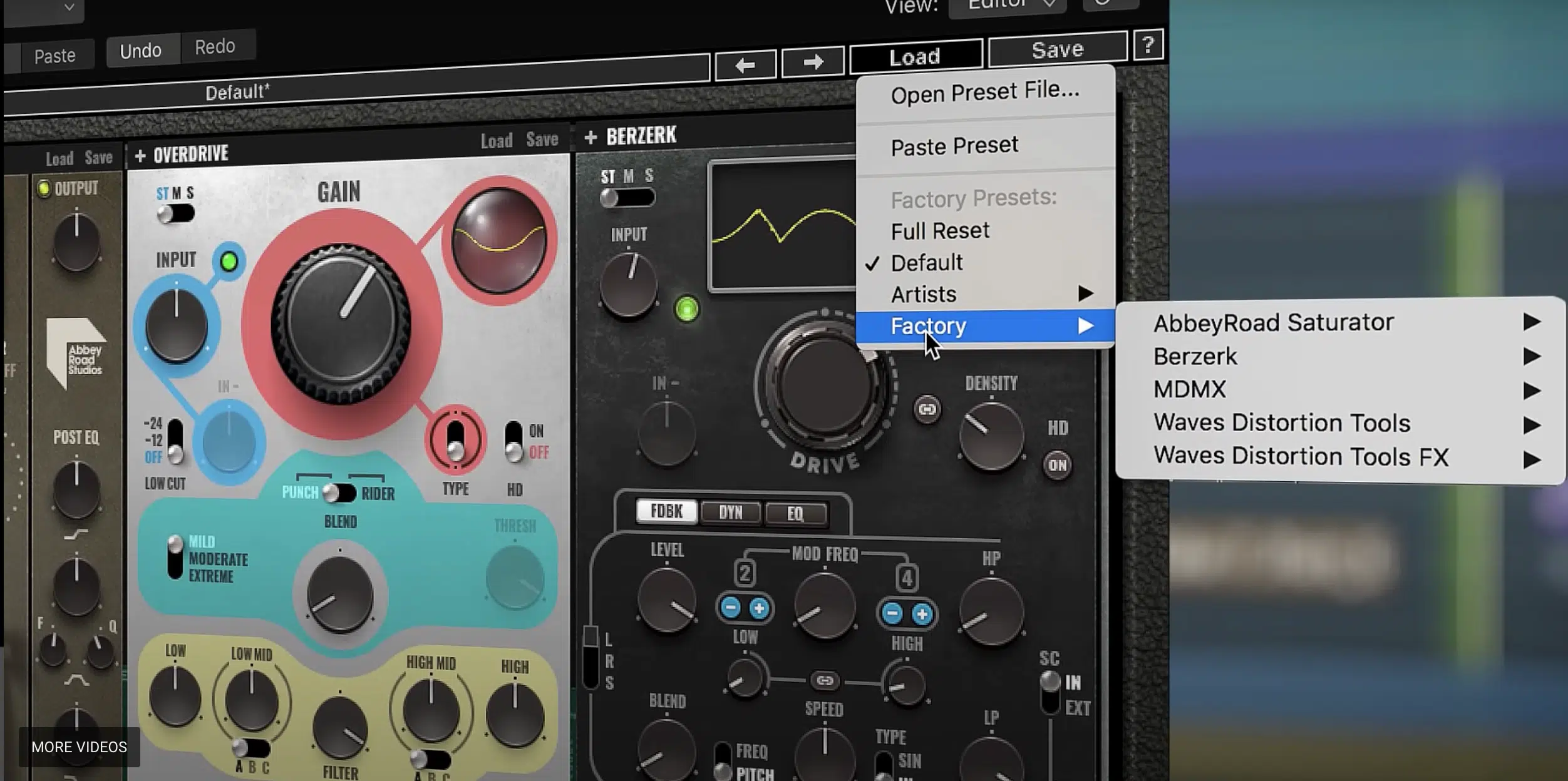
Presets are a fundamental component of virtual instruments, offering you endless sound design possibilities.
These presets are created by sound designers and can range from realistic instrument emulations to more experimental and unique sounds.
The advantage of any preset collection is that they:
- Save time
- Provide inspiration
- Offer learning capabilities
Whether you’re a beginner learning the ropes or a seasoned pro looking for a creative spark, presets in virtual instruments offer a wealth of sounds at your disposal.
You can also rely on them to serve as a learning tool.
They allow you to dissect and understand how different parameters and effects are used to create a particular sound.
Which, as a music producer looking to broaden their horizons and skills, is priceless.
Popular Virtual Instruments Platforms: VST, AU & AAX
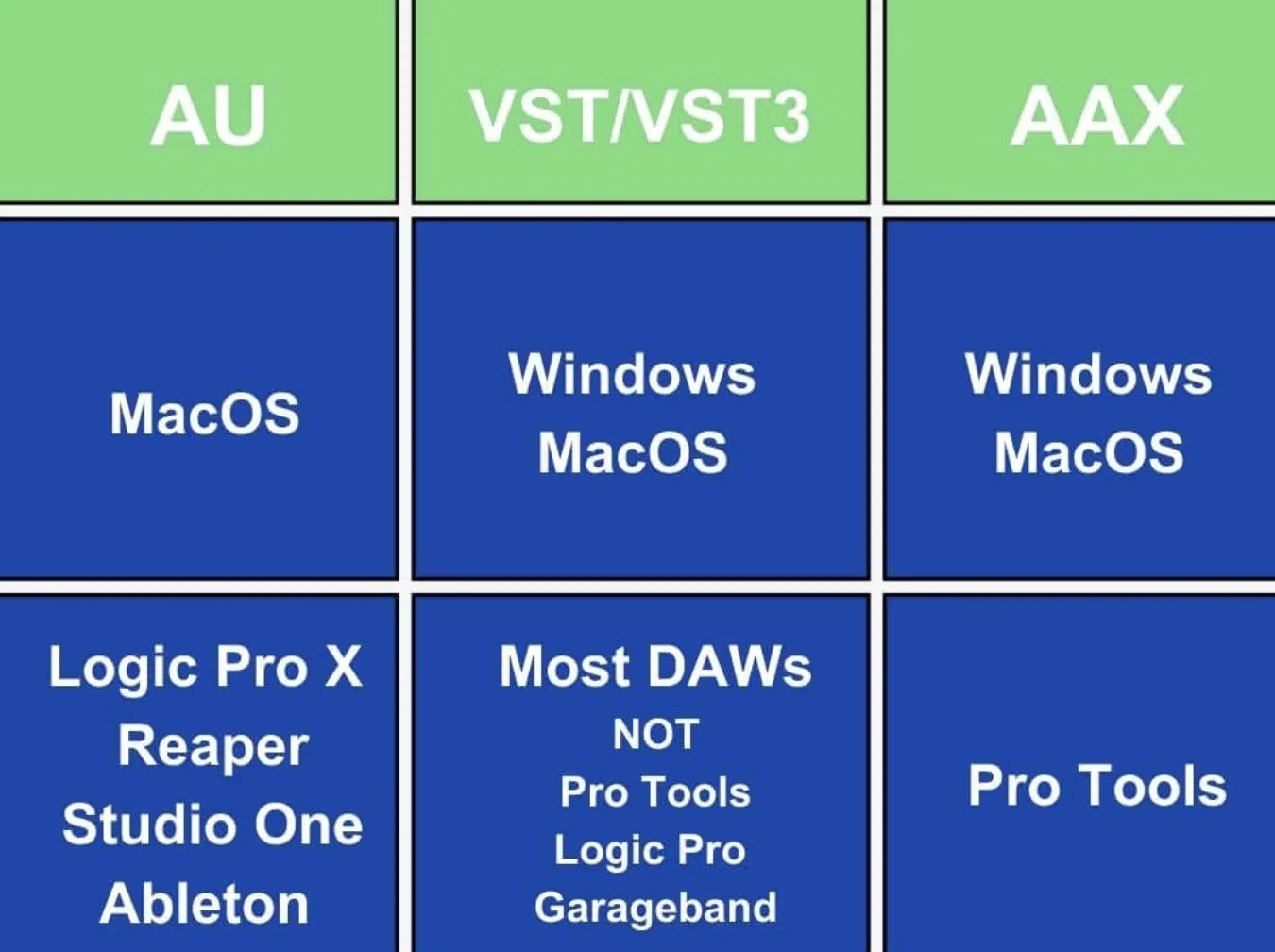
Virtual instrument software caters to all different styles, genres, and needs.
From industry-standard platforms to niche tools, one of these variations will definitely help you out.
As a music producer, you’ve got to be familiar with the most popular virtual instrument software in order to stay ahead of the curve.
Virtual Instrument Technology (VST), Audio Units (AU), and Avid Audio eXtension (AAX) are the leading formats in the virtual instrument world.
- VSTs 一 Are widely used and compatible with a range of DAWs.
- AU 一 Integrates seamlessly with Logic Pro & GarageBand.
- AAX 一 A plug in format specifically for Pro Tools users
Pro Tools variation (AAX) stands out for its robustness and integration with a large collection of virtual instruments; from drums and basses to pianos and strings.
It allows for intricate editing and mixing, making it a favorite among professionals.
Using Pro Tools, you can harness the full potential of virtual instruments, from orchestral arrangements to complex electronic tracks.
The choice of platform often depends on personal preference, the specific needs of a project, and the compatibility with other software plug ins and hardware
While Pro Tools (or any other similar multitimbral workstation) offers advanced features for professional production, VST and AU provide flexibility.
As well as a wide range of options for all levels of music producers and audio engineers.
The Art of Playing Virtual Instruments
Playing virtual instruments requires a blend of technical know-how and musical creativity. Let’s dive into some techniques that can elevate your performance and composition skills using these digital tools.
-
Producing with Strings, Brass, and Percussion Samples
Producing with string, brass, and percussion samples in virtual instruments allows for that legendary orchestral sound without the need for a live orchestra.
It’s crucial to understand the articulations and playing styles of these instruments to create rich, realistic arrangements.
For example, strings can provide lush, sweeping backgrounds or intense, staccato-driven melodies.
Brass and percussion samples add depth and power to a track 一 either at the beginning, end, or all the way through.
- Virtual brass 一 Range from soft, mellow tones to powerful, blaring sections.
- Percussion samples 一 Offer everything from subtle cymbals to hi-hat rolls.
Blending these elements and diverse samples can result in a show-stopping sound that can completely transform your tracks more than you can imagine.
Just try it out and listen for yourself, you might just get inspired and get into a super creative head space.
-
Emulating Analog Synths Digitally
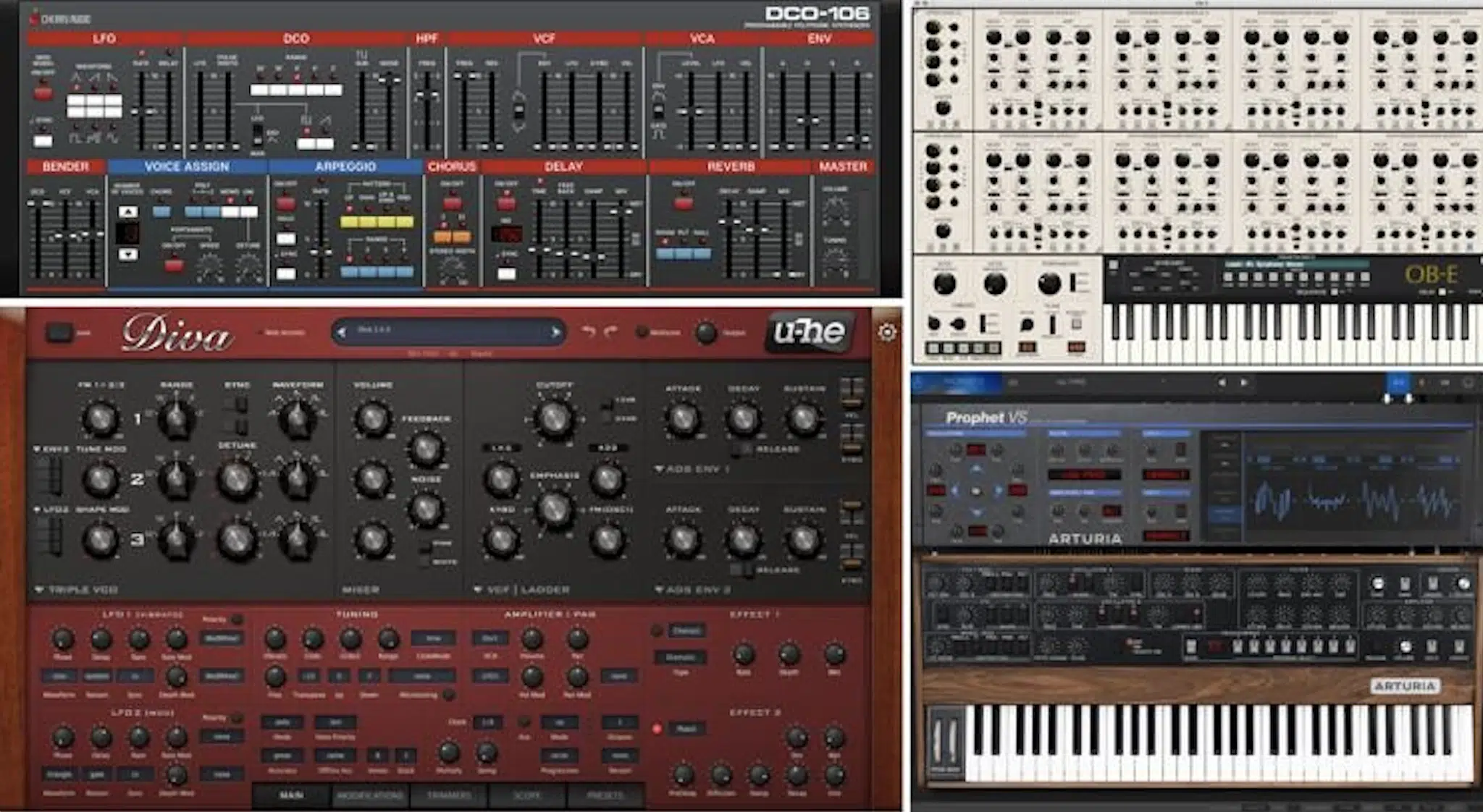
Emulating analog synths digitally is a popular application of virtual instruments.
Digital recreations of vintage synths provide the warm sound and character of their hardware counterparts, but with the added benefits of modern software features.
These virtual analog synths allow for extensive tweaking and pristine customization.
You can recreate classic sounds or invent new ones by adjusting different:
- Oscillators
- Filters
- Envelopes
This flexibility makes them a go-to for producers seeking that iconic analog synth sound with the convenience of a digital workflow.
-
Fine-Tuning Your Sounds: Controls and Interface Tips
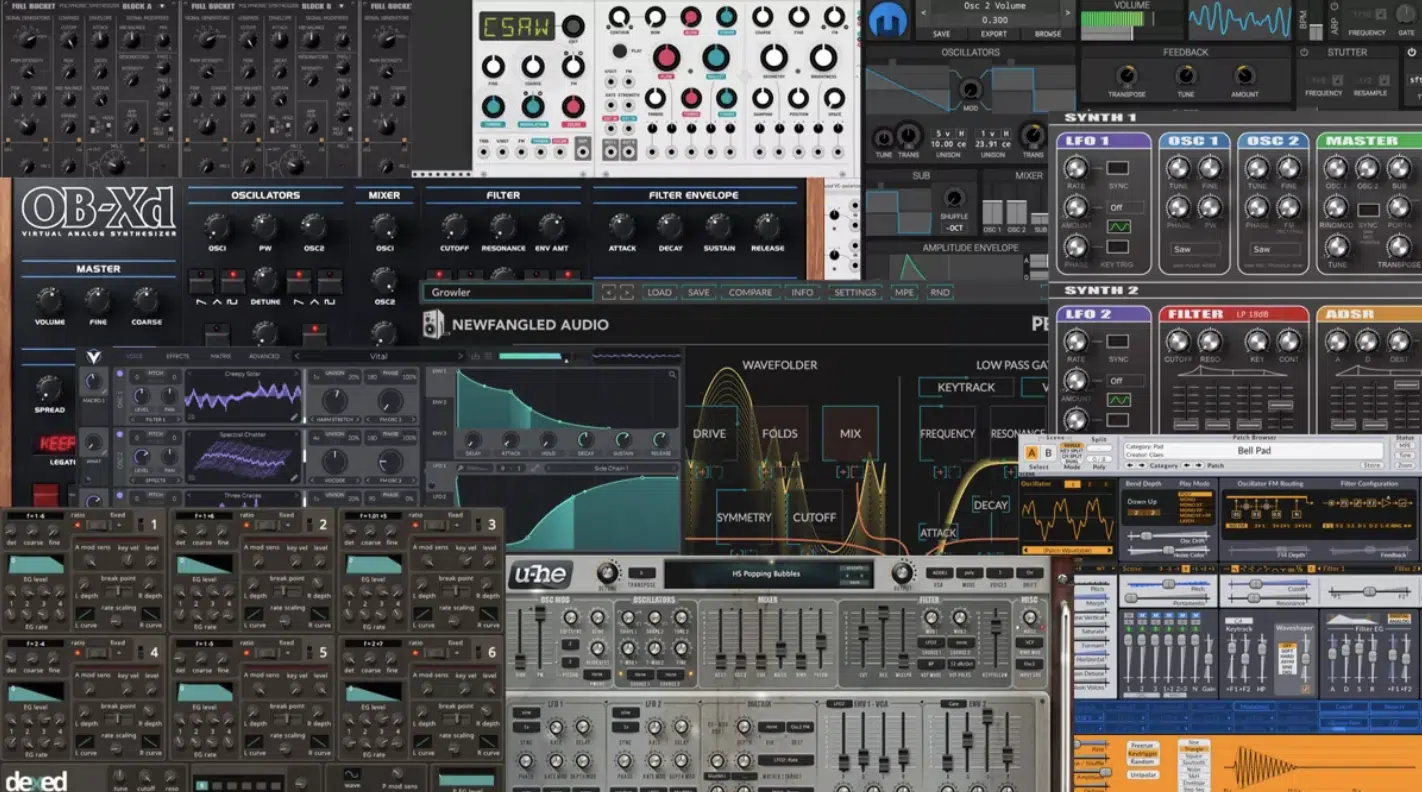
Fine-tuning sounds in virtual instruments is about understanding the controls and how they interact with each other.
Learning to navigate the interface effectively can unlock new sonic possibilities.
For instance, adjusting the attack and release parameters in a synth can drastically change the character of a sound 一 from percussive stabs to smooth, evolving pads.
Similarly, tweaking the filters and modulation controls can create everything from subtle warmth to dramatic, sweeping effects, essential for crafting a unique sound.
The interface of the best virtual instruments also plays a crucial role.
A well-designed interface not only makes sound manipulation more intuitive but also encourages experimentation.
For example, drag-and-drop functionality in sample libraries can simplify the process of creating complex layered sounds.
While, on the other hand, a clear dis play of waveforms and parameters in synths aids in precise sound design.
It’s all about what meshes with your particular workflow and evolving everyday.
Integrating Physical Hardware with Virtual Instruments
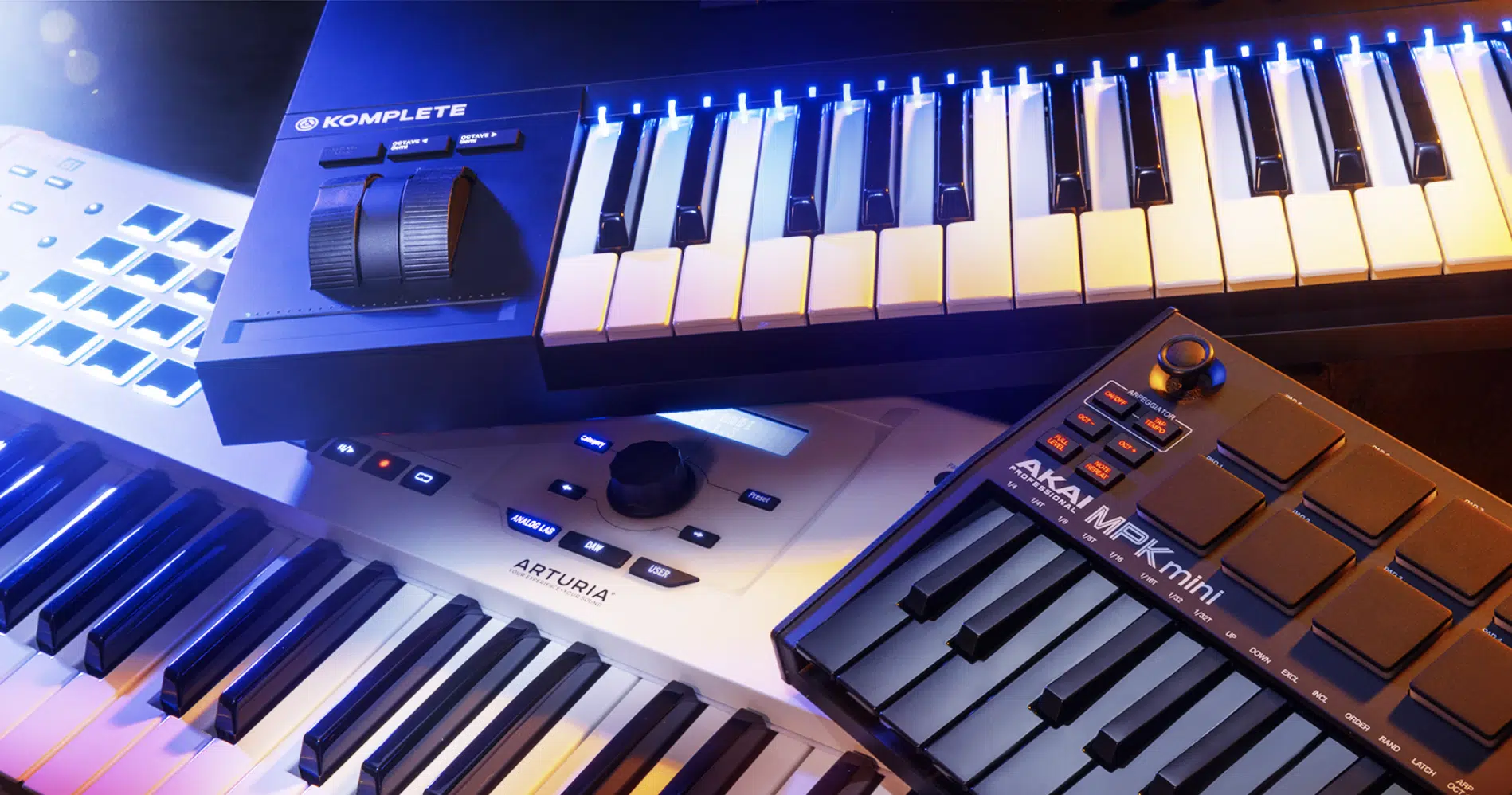
Integrating physical hardware (like MIDI controllers and MIDI keyboards) with virtual instruments can greatly enhance the playability and expressiveness of your music.
Controllers with weighted keys, for instance, can provide a more realistic piano playing experience.
This is essential for capturing the nuances of virtual pianos.
Hardware controllers with knobs, faders, and pads also offer tactile control over virtual instrument parameters.
It makes the process of adjusting oscillators, filters, and effects more interactive and intuitive.
This integration bridges the gap between digital and analog 一 allowing for a more immersive and satisfying creative process.
-
Pro Tip: Exploring Unique Sounds and Effects

Exploring unique sounds and effects right from your computer is a huge benefit of working with virtual instruments.
You can play around with less conventional aspects of these tools and produce surprising and innovative results.
For instance, manipulating sound effects with built-in effects like distortion, saturation, or FM synthesis can transform a simple sample into something entirely unrecognizable.
And, of course, super captivating and alluring.
Using Loops and Phrases to Enhance Your Music
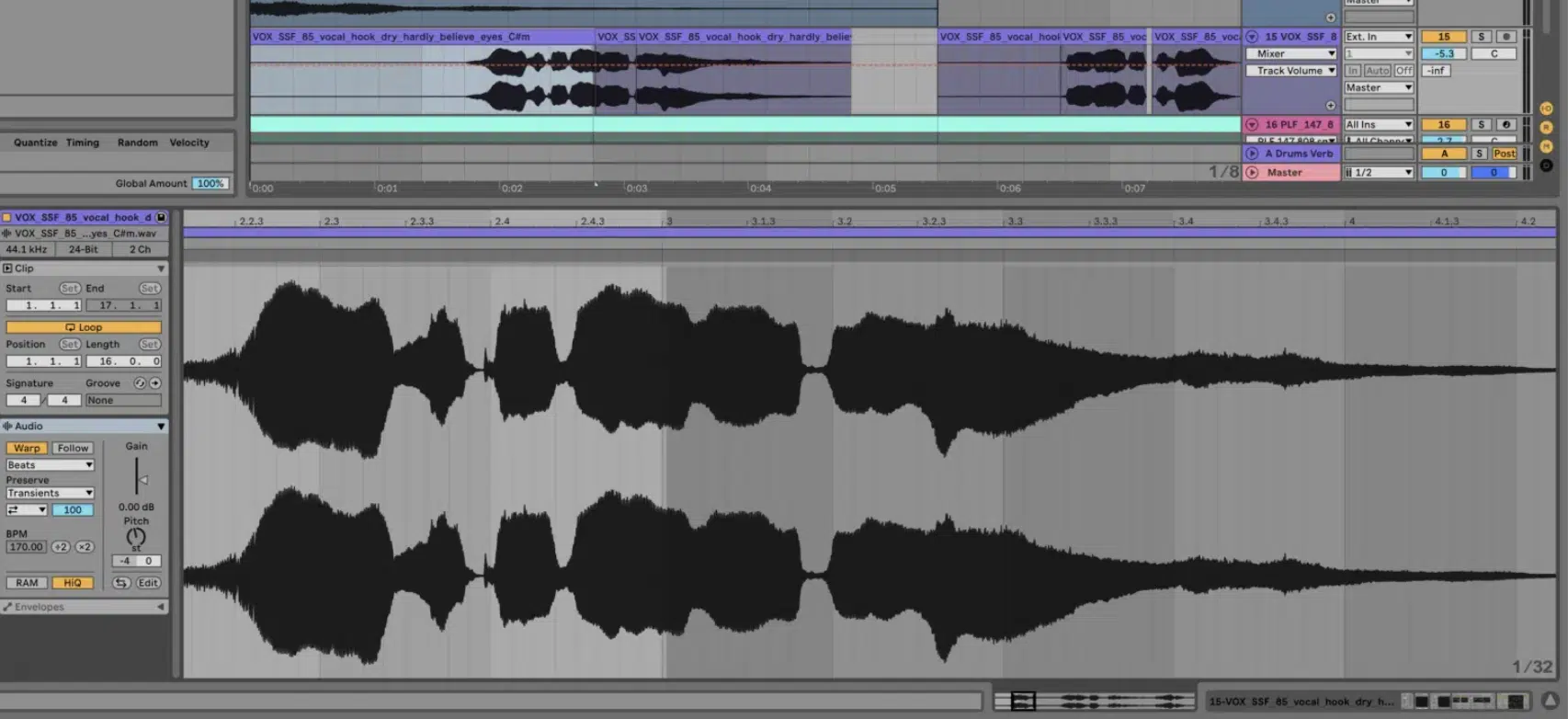
Using loops and phrases within virtual instruments can be a powerful tool for adding complexity and depth to your tracks.
Many virtual instruments that you can install come equipped with a range of pre-recorded loops (like bass loops/melody loops/drums) and phrases.
These can be a great source of inspiration or a jumping-off point for further innovation that can help you get inspired again.
Incorporating these elements, especially when you play around with genres like electronic and world music, can add a layer of sophistication to your tracks.
Whether it’s a grooving bass line or an intricate drum pattern, loops can provide a solid foundation upon which to build the rest of your track.
Experimenting with different loops and combining them creatively can lead to unique and engaging musical arrangements.
Beyond the Basics: Sound Design with Virtual Instruments
When you explore beyond the basics of virtual instruments (and bassline, drums, piano, wood winds, and other loops), it opens up a world of sound design possibilities. So, let’s explore how you can use these tools to not just play sounds, but to create them from scratch.
-
Creating Your Own Sounds: Sound Design with Sampling and Synthesis
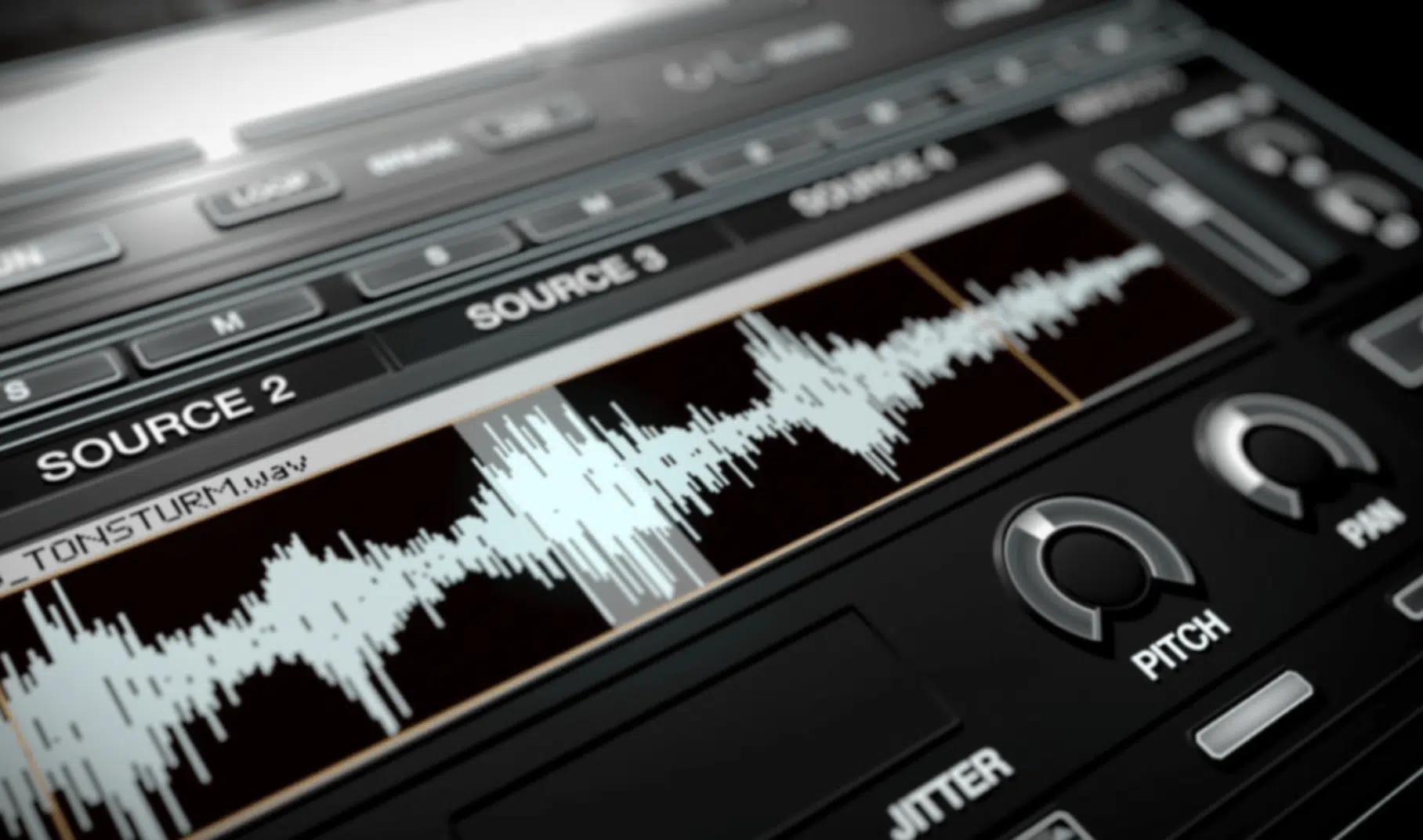
Creating your own sounds with virtual instruments involves a deep dive into sampling and synthesis.
Sampling lets you capture and manipulate real-world sounds, turning everyday noises into musical elements.
Synthesis, on the other hand, involves generating sound from scratch, using oscillators and various forms of modulation to create entirely new timbres.
This process of sound design is not only immensely creative but also highly technical.
It requires a thorough understanding of the tools at your disposal, like:
- The flexibility of FM synthesis.
- The intricacies of sample manipulation.
Mastering these techniques allows you to produce unique and compelling sounds that set your music apart.
If you’d like to learn all about FM synthesis or sample manipulation, we’ve got you!
-
Layering And Mixing Different Instrument Sounds

Layering and mixing different instrument sounds is a key technique in modern music production.
By combining multiple virtual instruments, you can create rich, complex textures that would be difficult to achieve with physical instruments alone.
For example, layering a virtual piano with a synth pad can add depth and atmosphere to a piece 一 while blending strings with brass can create a powerful, cinematic sound.
The art of mixing these sounds is equally important.
Balancing levels, EQing, and applying effects properly can ensure that each instrument sits perfectly in the mix.
It contributes to the overall feel of the track without overpowering the others.
This balance is crucial in genres ranging from orchestral to electronic music, where the interplay of different sounds defines the character of the music.
Virtual Instruments: Final Thoughts
Virtual instruments allow you to experiment, to push the boundaries of sound, and to express your musical ideas in ways that were previously unimaginable.
These tools are not just about replicating traditional sounds but also about opening new doors to creativity and innovation in music production.
As an added bonus, especially for those who like the best products available, you’ve got to check out the FREE VST plugin: Zen Master.
This revolutionary free VST plugin is a testament to the power and potential of virtual instruments.
Zen Master isn’t just another addition to your plugin collection 一 it’s a game-changer in its own right.
With its array of high-quality effects, including reverb, modeled tape saturation, warp/wobble effect, and various noise sources, it transforms the ordinary into the extraordinary.
The true brilliance of Zen Master lies in its ability to bring grit and texture to your tracks, adding depth and character that can elevate your music.
As you experiment with Zen Master, you’ll uncover new sonic territories and textures, which will inspire you to explore musical possibilities you never thought achievable.
Remember virtual instruments and plugins like Zen Master are there to help you to redefine your sound and push the boundaries of what’s possible in digital music production.
So, embrace the power of virtual instruments and let them inspire you to new heights of creativity and expression.
Until next time…





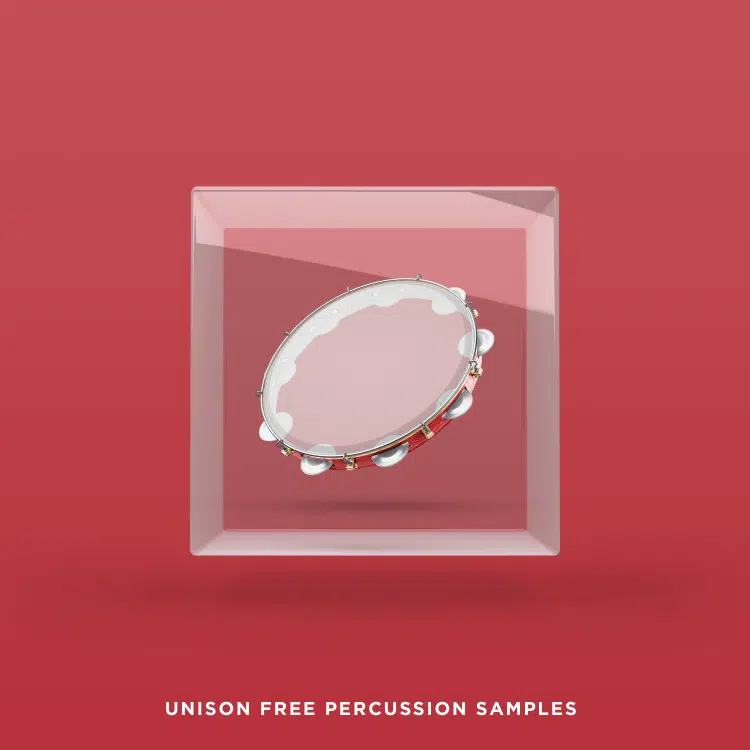


Leave a Reply
You must belogged in to post a comment.